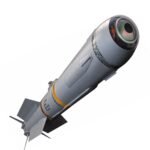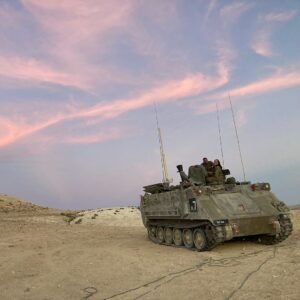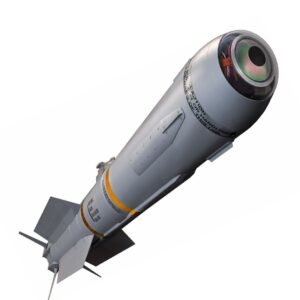Introduction:
The NASAMS (Norwegian Advanced Surface-to-Air Missile System) is an advanced air defense system that has gained global recognition for its exceptional capabilities. Designed and developed by the Norwegian company Kongsberg Defence & Aerospace (KDA), NASAMS has become a vital component in numerous countries’ defense strategies. In this article, we will delve into the origin, design, war history, features, upgrades, testing, and variants of the NASAMS air defense system.

NASAMS Air Defense System Origin:
The NASAMS system originated in the late 1980s when the Royal Norwegian Air Force (RNoAF) sought to replace its aging Hawk missile system. Recognizing the need for a more modern and effective air defense solution, Kongsberg Defence & Aerospace began the development of the NASAMS system in collaboration with the United States defense contractor, Raytheon.
Design and Development History:
The design and development of the NASAMS defense system spanned several years of collaborative efforts between Kongsberg Defence & Aerospace and Raytheon. The system utilizes the proven AIM-120 Advanced Medium-Range Air-to-Air Missile (AMRAAM) as its primary interceptor, ensuring reliability and performance.
General Specifications of The NASAMS Air Defense System:
| Specification | NASAMS System |
| Missile Range | Up to 25 km (15.5 miles) |
| Engagement Altitude | Up to 60,000 feet (18,300 meters) |
| Missile Type | AIM-120 AMRAAM |
| Radar System | AN/MPQ-64F1 Sentinel X Band |
| Command and Control | NASAMS Fire Distribution Center (FDC) |
| Mobility | Highly mobile and transportable |
| Interoperability | Integrated with NATO air defense systems |
| Deployment Time | Rapid deployment capability |
| Number of Launcher Vehicles | Varies depending on the configuration |
Features:
- Advanced Interceptor: The NASAMS system utilizes the AIM-120 AMRAAM missile, known for its long-range engagement capability and superior target tracking.
- Multi-Function Radar: Equipped with the AN/MPQ-64F1 Sentinel X Band radar, NASAMS can detect and track multiple airborne threats simultaneously, providing a comprehensive situational awareness picture.
- Command and Control: The NASAMS Fire Distribution Center (FDC) serves as the command and control hub, coordinating and managing the system’s various elements.
- Integrated Air Defense Network: NASAMS can seamlessly integrate with existing air defense networks, enabling interoperability with other allied air defense systems.
Upgrade and Testing:
To ensure its effectiveness and relevance in modern warfare scenarios, the NASAMS defense system undergoes regular upgrades and testing. Kongsberg Defence & Aerospace continually works to enhance the system’s capabilities, including improvements in radar technology, missile performance, and command and control functionalities.
The testing process involves rigorous evaluations, including live-fire exercises and simulated scenarios. These tests verify the system’s effectiveness, reliability, and interoperability with other defense systems.

Variants:
- NASAMS I: The initial version of the NASAMS system developed in the 1990s, featuring a basic configuration with a limited number of launcher vehicles and associated equipment.
- NASAMS II: The NASAMS II represents an upgraded version of the system, incorporating advanced enhancements to improve its performance and effectiveness. It includes improved radar capabilities, upgraded missiles, and enhanced command and control features.
- NASAMS III: The NASAMS III is the latest iteration of the air defense system, introduced to meet the evolving threat landscape. It incorporates advanced technologies, such as improved radar systems, upgraded missiles with extended range, and enhanced target discrimination capabilities.
- NASAMS-GBAD (Ground-Based Air Defense): The NASAMS-GBAD is a specialized variant of the system designed for ground-based air defense missions. It offers increased mobility, deployability, and flexibility, making it suitable for protecting vital assets during military operations.
- NASAMS High Mobility Launcher (HML): The NASAMS HML variant focuses on mobility, featuring a highly mobile launcher platform that can be rapidly deployed and repositioned as permission requirements. It enhances the system’s operational flexibility and responsiveness.

Future Developments:
Kongsberg Defence & Aerospace continues to invest in the research and development of the NASAMS system to maintain its technological edge. Future developments may include improvements in missile technology, enhanced radar capabilities, integration with emerging air defense systems, and increased interoperability with allied forces.
War History:
The NASAMS defense system has seen active deployment in various conflicts worldwide. Norway was the first country to adopt the NASAMS system in the late 1990s, enhancing its air defense capabilities. Over the years, NASAMS has been employed by multiple countries, including the United States, Finland, the Netherlands, and Spain.
In recent conflicts, such as Operation Inherent Resolve in the Middle East, the NASAMS system has played a crucial role in protecting ground forces and strategic installations from aerial threats. Its high mobility and rapid reaction time have proven to be invaluable assets on the battlefield.

NASAMS AIR Defense System Country Operators
The NASAMS defense system is operated by several countries around the world.
- Norway: The Royal Norwegian Air Force (RNoAF) was the first operator of the NASAMS system. Norway recognized the need to enhance its air defense capabilities and adopted the NASAMS system in the late 1990s. The RNoAF continues to operate and upgrade the system to meet its defense requirements.
- United States: The United States is another significant operator of the NASAMS system. The U.S. Army and U.S. National Guard employ NASAMS units to protect critical infrastructure, military bases, and forces. The system provides the U.S. military with a versatile and reliable air defense solution.
- Finland: The Finnish Air Force operates the NASAMS system to safeguard its airspace and defend against potential aerial threats. Finland’s adoption of NASAMS demonstrates its commitment to maintaining a strong air defense posture.
- Netherlands: The Royal Netherlands Air Force (RNLAF) utilizes the NASAMS system as a key component of its air defense capabilities. It provides the RNLAF with the ability to protect critical assets and respond to airborne threats effectively.
- Spain: Spain has incorporated the NASAMS system into its air defense architecture. The Spanish Armed Forces employ the system to enhance their overall defense capabilities and protect strategic locations.
- Oman: The Sultanate of Oman is an operator of the NASAMS defense system, utilizing it to secure its airspace and protect vital installations.
- Lithuania: As part of NATO’s enhanced Forward Presence (eFP) initiative, Lithuania has procured the NASAMS system to bolster its air defense capabilities and contribute to regional security.
These are just a few examples of the countries that operate the NASAMS air defense system.
Read More:-The IRIS-T Missile: Advanced Tech for Air Defense and BUK Missile System.













